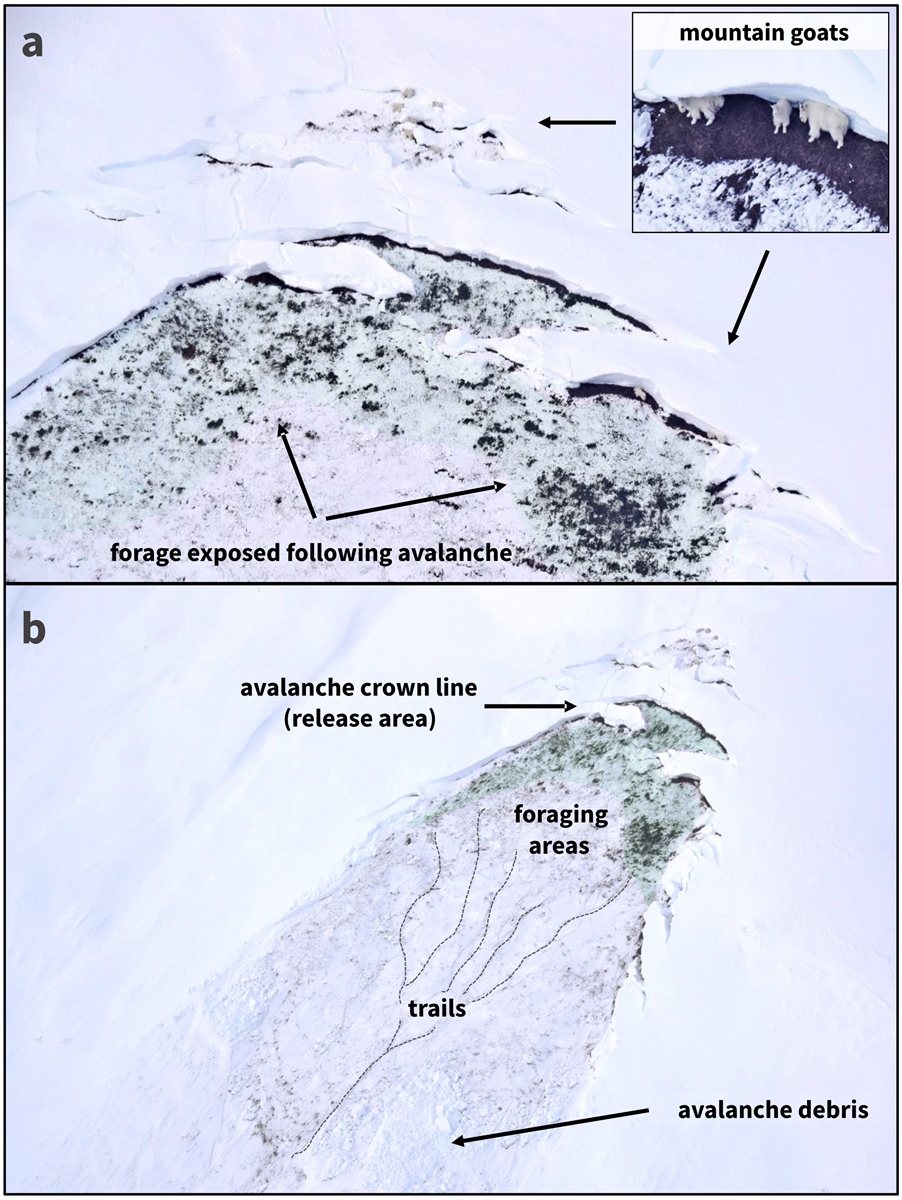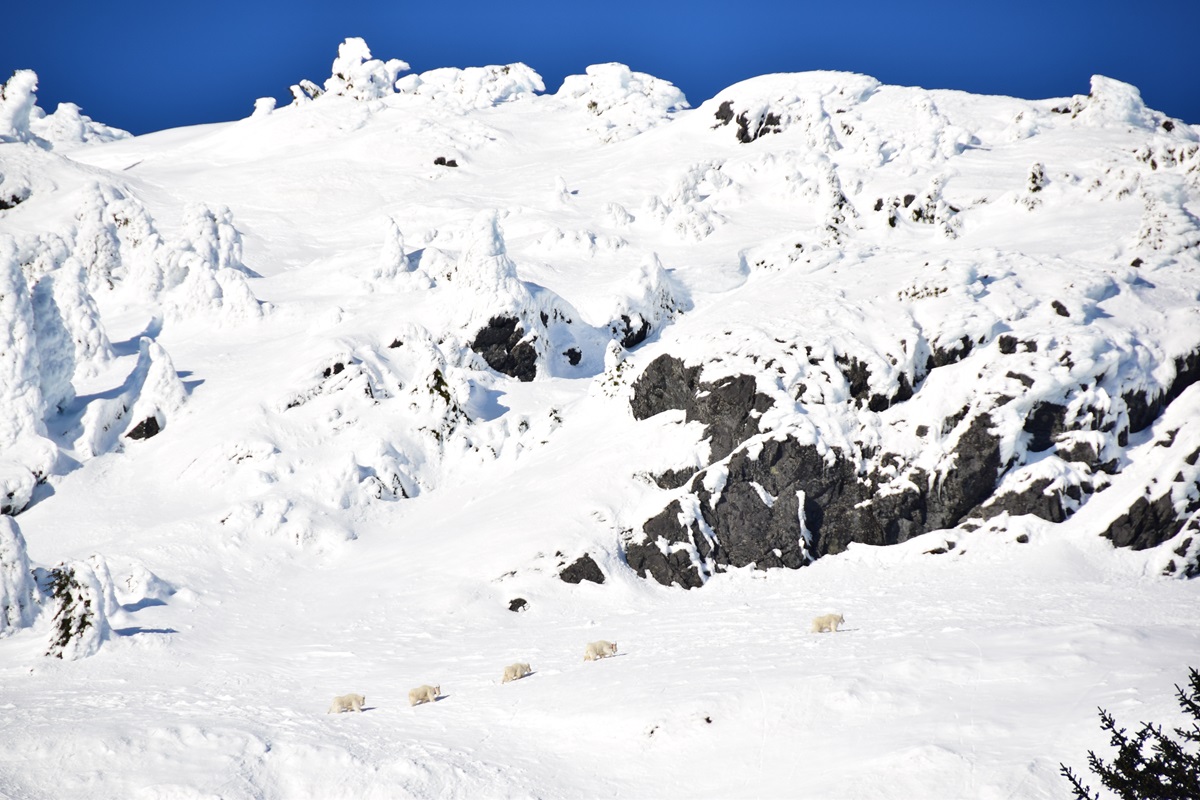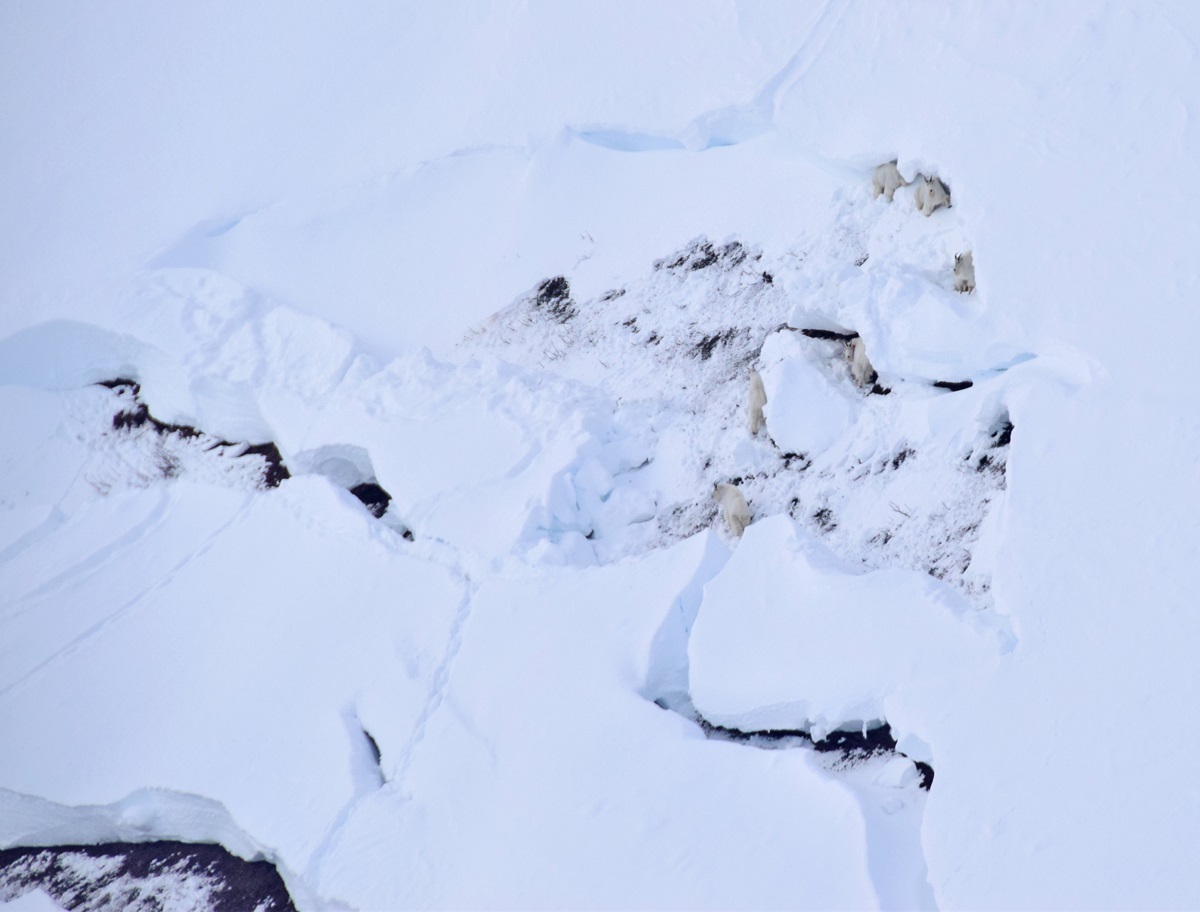Publications

Snow avalanches are a primary climate-linked driver of mountain ungulate populations
Read more…
ACRC researchers and collaborators are exploring the relationship between snow avalanches and mountain goat population ecology in coastal Alaska.
Snow is a major, climate-sensitive feature of the Earth’s surface and catalyst of fundamentally important ecosystem processes. Snow avalanches are widespread in mountain environments and have a wide variety of effects that can lead to both beneficial and deleterious outcomes for wildlife populations. This project is focused on advancing our understanding of how avalanches influence population and habitat ecology of mountain goats in the Coast Mountains of southeast Alaska. Mountain goats are an iconic species of North American mountain landscapes and cultures, with indigenous communities along the North Pacific coast having maintained enduring traditional uses of mountain goats for millennia.
Using a multidisciplinary approach, this project involves integration of an extensive, individual-based mountain goat field monitoring data set with spatially explicit avalanche simulation modeling to quantify how avalanches influence the population ecology of mountain wildlife. Specifically, using a long-term (2005-2022) GPS collar data from 434 mountain goats in four regions of the Coast Mountains, we investigate relationships between mountain goat use of avalanche terrain and patterns of mortality and ultimately population dynamics. The projected impacts of avalanches on mountain goat population dynamics carry important implications for conservation and management among diverse groups of stakeholders, especially given rapidly changing climate conditions in mountain systems.
This project is funded by the USGS Alaska Climate Adaptation Science Center, in partnership with the University of Alaska Southeast, University of Alaska Fairbanks, USGS Northern Rocky Mountain Science Center, WSL Institute for Snow and Avalanche Research, University of Victoria, and Oregon State University. Analyses are made possible through a data sharing agreement with the Alaska Department of Fish and Game which, along with other partners, provided funding and support for original collection of mountain goat monitoring data.

